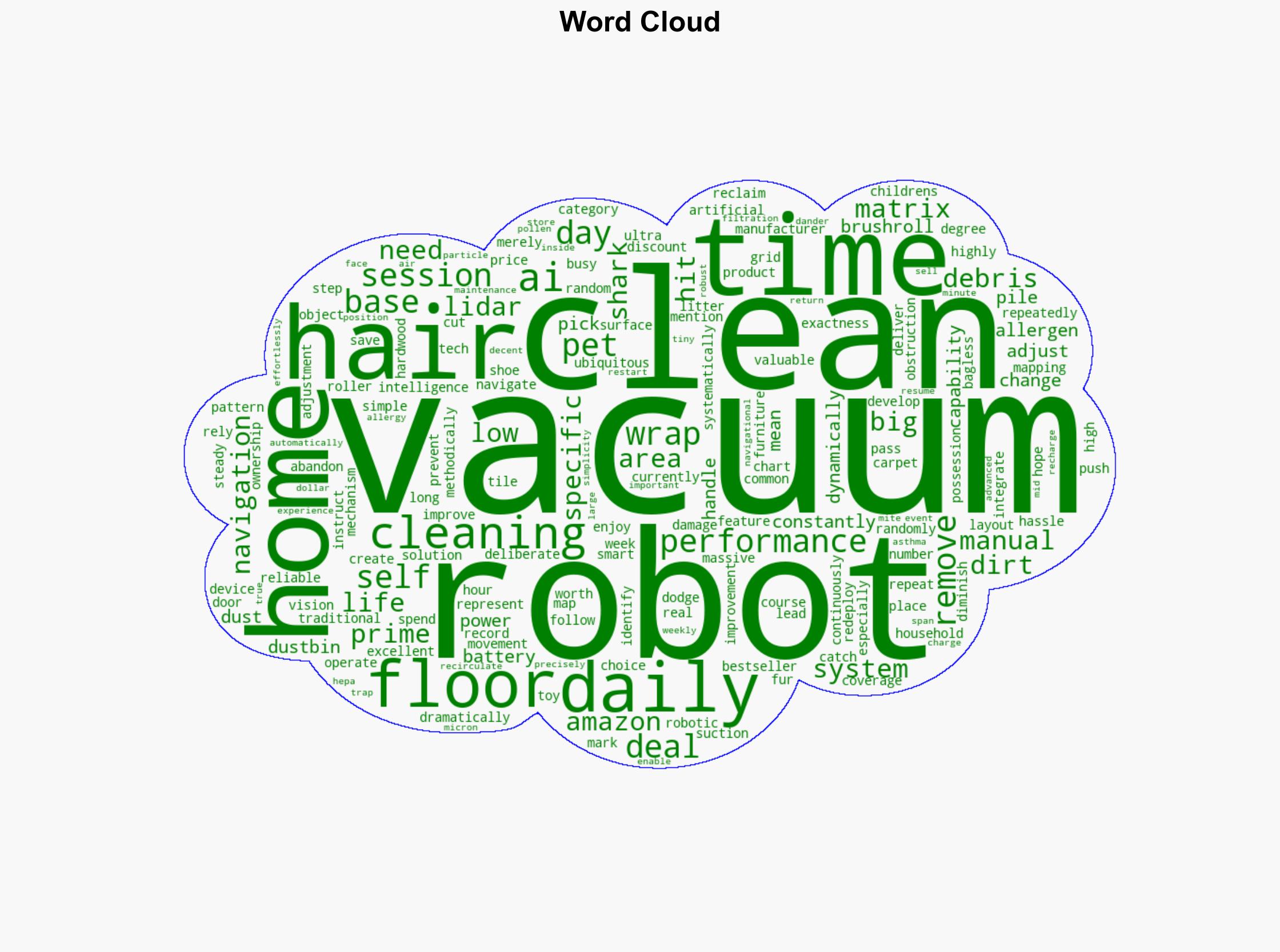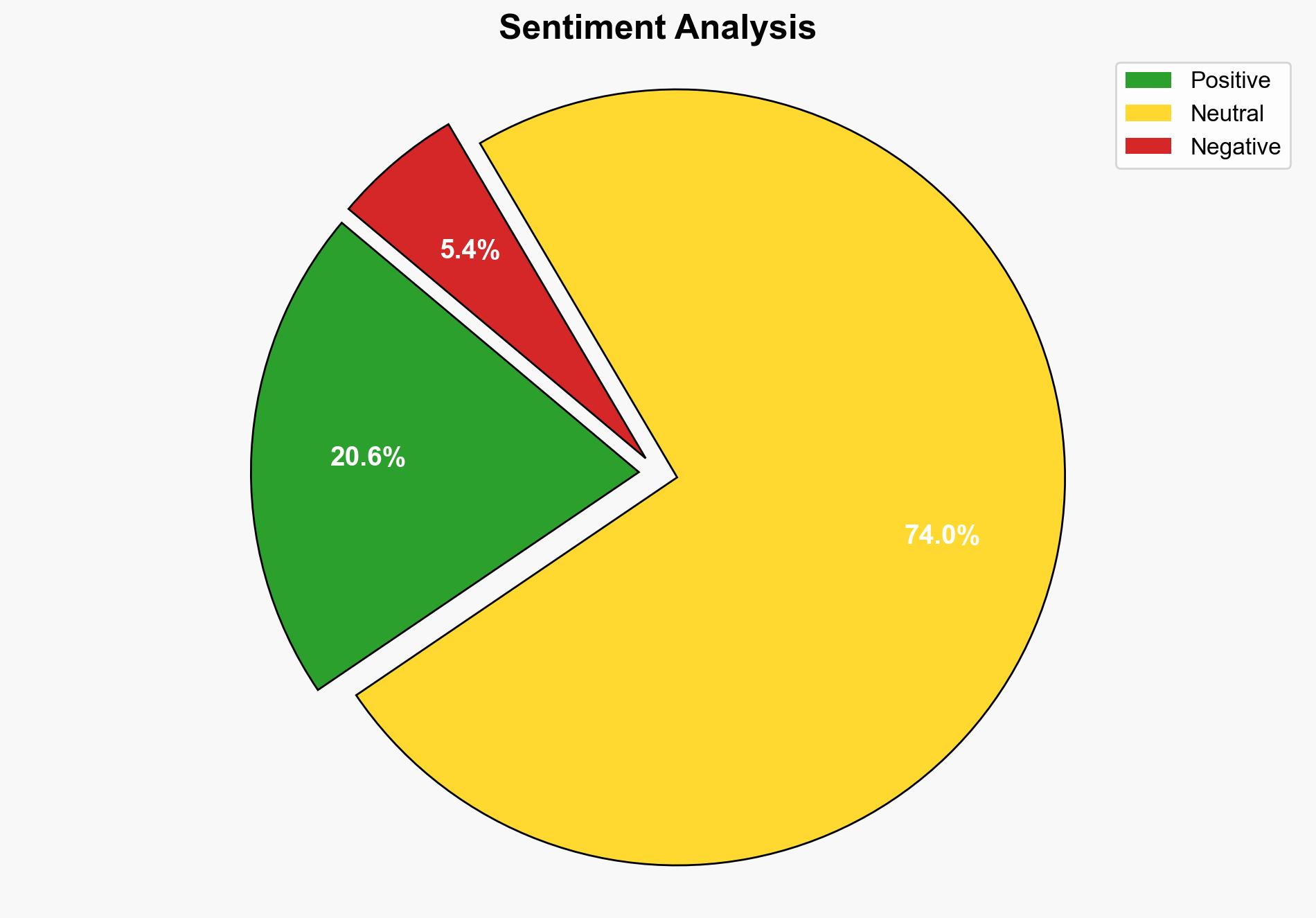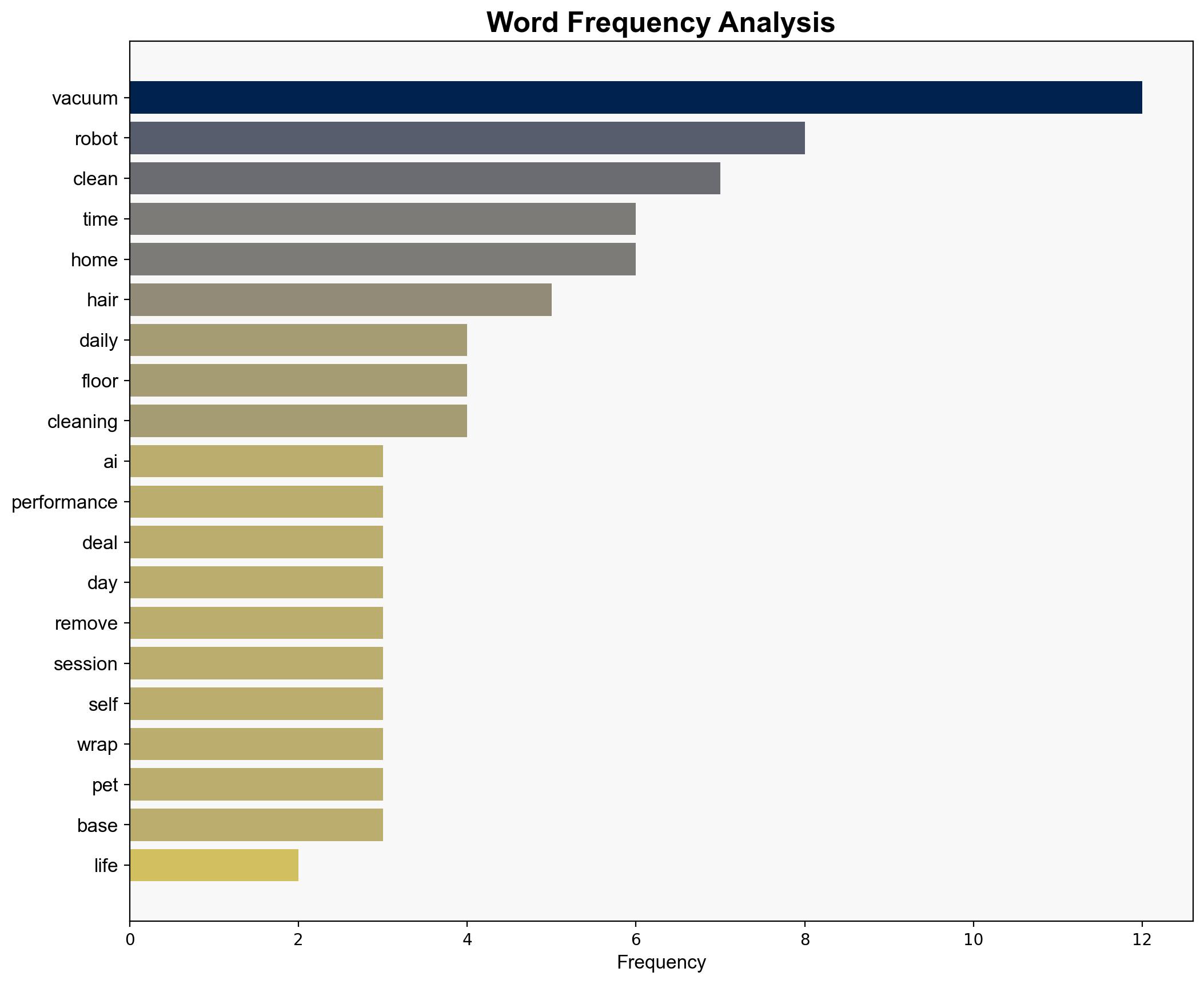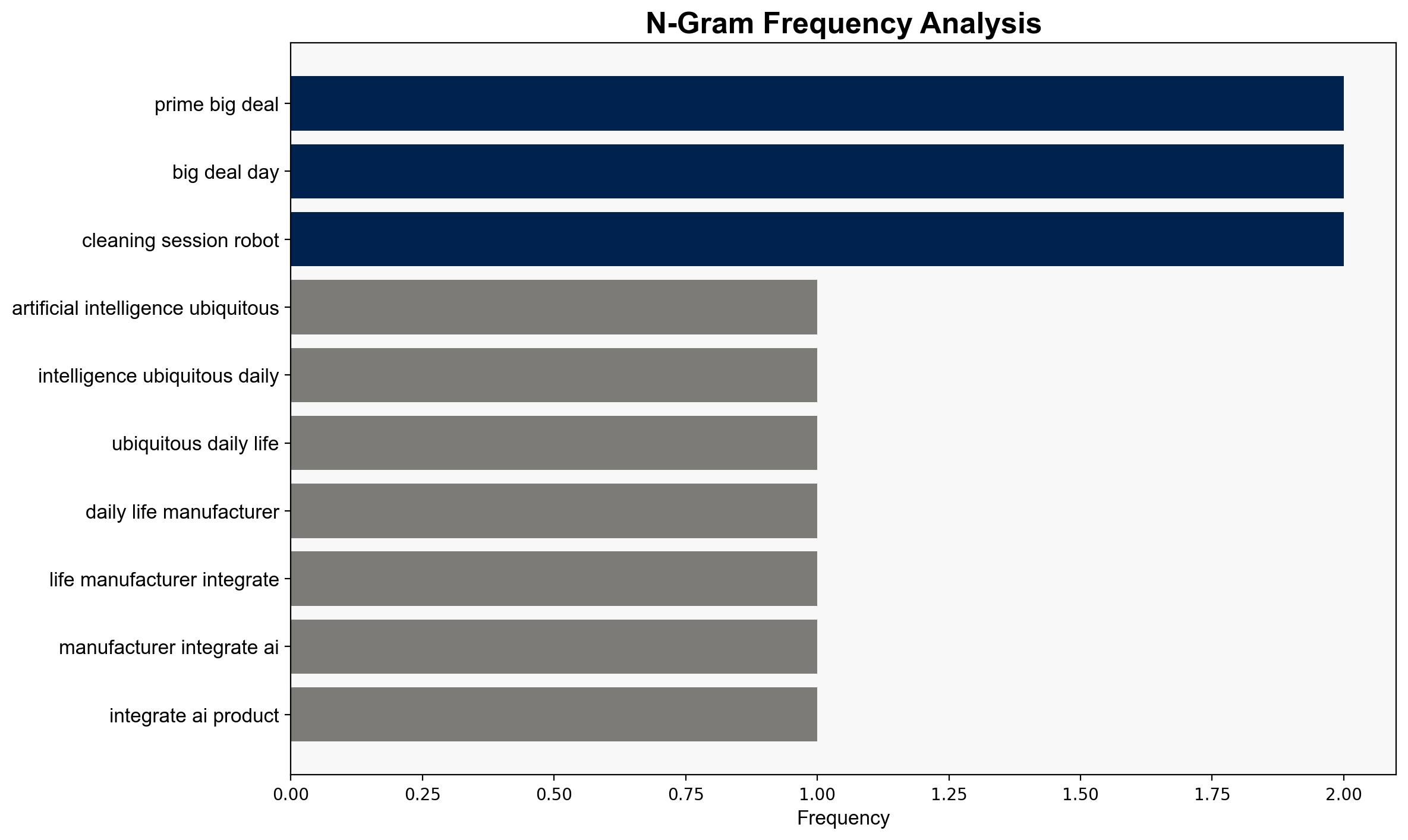Shark Wants to Crush the Competition Selling Its AI Robot Vacuum at a Loss for Prime Day on Amazon – Kotaku
Published on: 2025-10-06
Intelligence Report: Shark Wants to Crush the Competition Selling Its AI Robot Vacuum at a Loss for Prime Day on Amazon – Kotaku
1. BLUF (Bottom Line Up Front)
The strategic judgment is that Shark’s decision to sell its AI robot vacuum at a loss during Amazon Prime Day is a calculated move to capture market share and establish brand dominance in the AI home appliance sector. This hypothesis is supported by the aggressive pricing strategy and the emphasis on advanced features. The recommended action is to monitor competitor responses and consumer feedback to assess market dynamics post-Prime Day. Confidence Level: Moderate.
2. Competing Hypotheses
Hypothesis 1: Shark is using loss-leader pricing to rapidly increase market share and establish brand loyalty, aiming to recoup losses through future sales and brand recognition.
Hypothesis 2: Shark is offloading excess inventory due to overproduction or anticipated technological obsolescence, using Prime Day as an opportunity to clear stock.
3. Key Assumptions and Red Flags
Key Assumptions:
– Hypothesis 1 assumes that Shark has sufficient financial resilience to absorb initial losses and that the market will respond positively to the product’s advanced features.
– Hypothesis 2 assumes that there is a significant inventory surplus and that technological advancements will soon render current models less competitive.
Red Flags:
– Lack of data on Shark’s financial health and inventory levels.
– Potential bias in assuming consumer behavior will align with Shark’s strategic goals.
4. Implications and Strategic Risks
If Hypothesis 1 is correct, Shark could significantly disrupt the market, forcing competitors to lower prices or innovate rapidly, potentially leading to a price war. If Hypothesis 2 holds, Shark might face reputational risks if consumers perceive the product as outdated or inferior. Both scenarios could impact the broader AI home appliance market, influencing consumer expectations and technological standards.
5. Recommendations and Outlook
- Monitor competitor pricing and promotional strategies post-Prime Day to gauge market reaction.
- Conduct consumer sentiment analysis to understand brand perception and product satisfaction.
- Scenario Projections:
- Best Case: Shark captures significant market share, enhancing brand loyalty and setting industry standards.
- Worst Case: Competitors retaliate with aggressive pricing, leading to a market-wide price war and reduced margins.
- Most Likely: Shark gains moderate market traction, prompting incremental innovations from competitors.
6. Key Individuals and Entities
– Shark (Manufacturer)
– Amazon (Retail Platform)
7. Thematic Tags
market dynamics, consumer electronics, competitive strategy, AI technology, retail strategy




